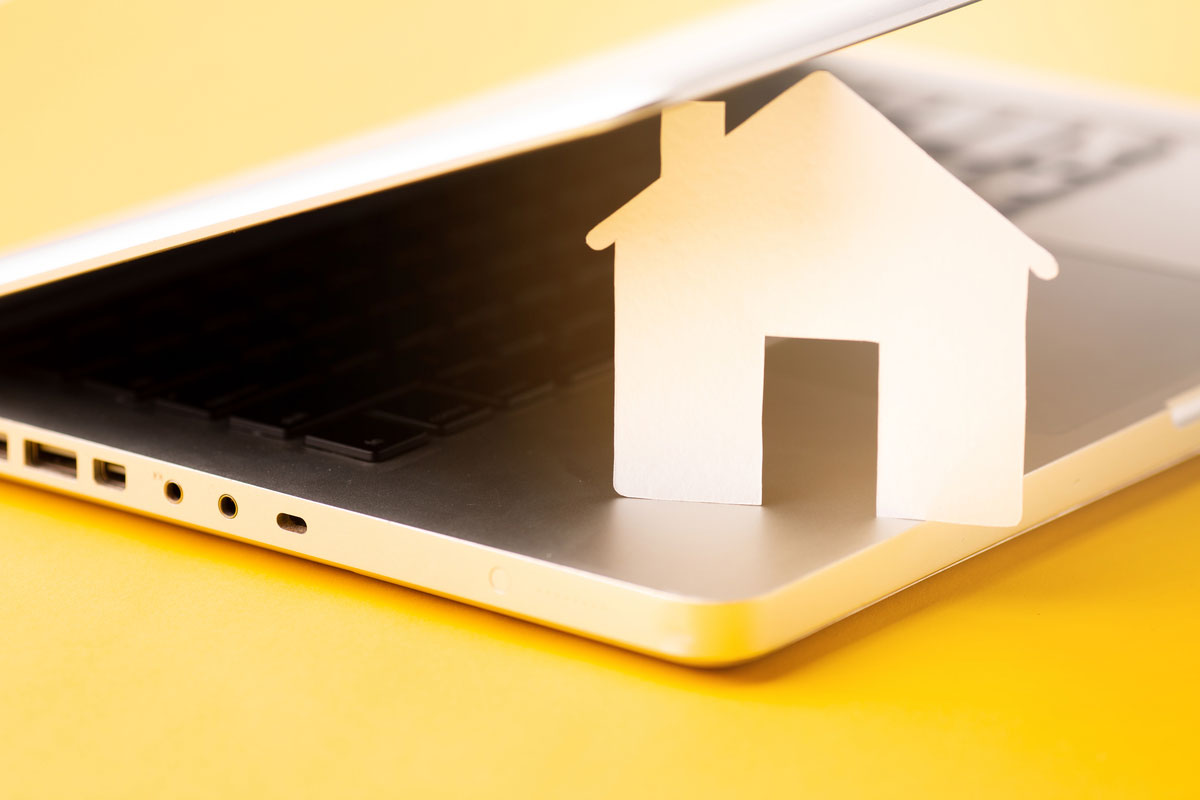Exclusive Neuroject Article: The insurance industry stands at the precipice of an unparalleled transformation, ushered in by the omnipresence of the IoT in insurance. As 2024 draws to a close, reflecting on the trajectory of the Internet of Things within the insurance sector unveils a landscape characterized by groundbreaking advancements and profound disruptions.
The evolution of IoT in insurance has fundamentally reshaped the traditional modus operandi of insurance. The interconnectivity of devices, generating an unprecedented deluge of real-time data, has sparked a seismic shift in how insurers assess risk, process claims, and engage with policyholders. The promise of IoT in insurance lies not only in its capacity to enhance operational efficiencies but also in its potential to drive customer-centric innovations and reshape business models.
Throughout the year, the integration of these technologies into insurance practices has unfurled a myriad of possibilities and complexities. While insurers navigate the vast landscape of IoT-generated data, they grapple with issues of data security, privacy concerns, and the ethical use of this wealth of information.
Moreover, the convergence of IoT in insurance with emergent technologies like artificial intelligence and blockchain presents both unparalleled opportunities and intricate challenges, accentuating the need for vigilant adaptation and robust governance frameworks.
Table of Contents
What is the Internet of Things?
The Internet of Things refers to a system of interconnected devices that communicate and share information and the cloud. These devices, equipped with sensors and software, encompass both mechanical and digital machines as well as everyday consumer items.
Businesses across various sectors are increasingly leveraging IoT to optimize operations, elevate customer service, enhance decision-making processes, and augment overall business value.
IoT facilitates the seamless transfer of data across networks, eliminating the need for direct human-to-human or human-to-computer interactions.

Why is IoT so Important?
IoT is highly important in the business world for a multitude of reasons. Below are the key benefits that IoT offers:
Enhanced Efficiency
Employing IoT gadgets for streamlining and enhancing processes allows businesses to heighten efficiency and output. For instance, IoT sensors enable the monitoring of equipment performance, identifying and often resolving potential issues before they cause disruptions. This practice minimizes maintenance expenses and increases operational time.
Data-Driven Decision-Making
IoT devices generate extensive data that can facilitate improved business decisions and innovative business models. Analyzing this data grants businesses insights into customer behavior, market trends, and operational efficiency, aiding in informed decisions regarding strategy, product advancement, and resource distribution.
Cost Reductions
Through the reduction of manual tasks and the automation of repetitive activities, IoT can assist businesses in cutting expenses and bolstering profitability. For example, IoT devices monitoring energy usage can optimize consumption, thus diminishing energy costs and promoting sustainability.
Augmented Customer Experience
Leveraging IoT technology to gather customer behavior data enables businesses to craft more tailored and compelling customer experiences. For instance, retailers utilizing IoT sensors to track customer movements in stores can deliver personalized offers based on individual behavior, enhancing customer engagement.
Implementation of IOT in Insurance
In recent years, technology advancements have been driving a substantial change in the insurance sector. Among these transformative technologies, IoT in insurance has emerged as a key player in reshaping how insurance operates. IoT in insurance encompasses interconnected devices with embedded sensors and software, allowing them to gather and share data. Within insurance, IoT in insurance has created fresh possibilities for insurers to streamline operations, manage risks more effectively, and elevate the overall customer experience.

Advantages of IoT Product Insurance
Here are some of the benefits that the Internet of Things brings to the insurance industry:
New Revenue Sources
Customers pay premiums in exchange for insurance coverage, constituting the primary revenue stream for insurance companies. There’s a potential market demand for innovative services and products like predictive maintenance, monitoring, and control across various domains such as vehicles, assets, individuals, and pets.
Other areas with high demand include energy consumption management, security and surveillance solutions, building management systems, telemedicine and healthcare services, everyday utility provisions, and tailored service recommendations. Insurance firms could utilize IoT in insurance for cross-selling to their customer base.
With access to more comprehensive customer data and habits, there’s an opportunity to suggest novel personalized products, provide individualized recommendations, and establish partnerships with networks like car repair shops or MoT specialists. Such collaborations might lead to repeat business and potential commission opportunities.
Reduce costs
Insurance companies stand to achieve substantial cost reductions by leveraging IoT data to develop advanced fraud detection models based on sensor-driven decisions. This approach could potentially save billions of dollars annually by effectively identifying fraudulent claims through IoT in insurance and sensor data analysis.
Access to richer consumer data enables underwriters to create more personalized risk assessments, leading to a heightened accuracy in evaluating risks. Dynamic insurance policies not only serve as a protective measure for insurers by penalizing undesirable behavior but also incentivize customers to exercise greater caution by rewarding positive behavior.
Implementing Predictive Maintenance and Warning Services holds the promise of saving billions of dollars yearly. Proactively addressing potential causes of accidents, such as a leaking pipe, proves significantly more cost-effective than addressing the extensive damages resulting from an accident, which would lead to much larger claims.
Improve the Customer Experience and Relationship
Except in the event of a claim, there are typically only two instances of interaction between the insurer and the customer: initially, when the terms are agreed upon, and subsequently, during the renewal or cancellation process. Insurers seldom engage in direct communication with the individuals they serve; when they do, it’s often through automated emails or phone calls.
Establishing robust relationships and actively engaging clients poses a challenge for insurance companies due to limited interaction with them over time. With access to real-time customer information, there’s an opportunity to increase client engagement by introducing new services such as alerts, personalized recommendations, loyalty programs, and incentives for favorable behavior.
This introduces a higher level of customer experience, potentially reducing customer turnover rates and enabling a more competitive stance, not just through reduced premium costs through IoT in insurance.
Optimization of Risk Assessment and Prevention
Insurers can adopt a proactive stance by harnessing IoT data, shifting from reacting to events to foreseeing and preventing them through IoT in insurance. For instance, in a scenario like a boiler malfunction in a commercial building, the insurer could alert the policyholder before substantial damage occurs. This proactive approach not only fosters a sense of security among customers but also bolsters brand loyalty, retention rates, and trust.
The capabilities offered by IoT in insurance enable insurance companies to elevate their value proposition from merely covering risks to actively preventing them. Encouraging consumers to install devices like functional fire alarms, leak detectors, and temperature and gas sensors in their residences, commercial spaces, or businesses can significantly mitigate property damage and associated expenses.
These sensors, akin to security systems, can promptly notify both the insurer and the consumer about any irregularities. While risk management traditionally falls outside the realm of insurance firms, leveraging IoT in insurance for this purpose can create synergy between customers and insurers.

Some Important Use Cases of IoT in Insurance
Within the IoT-powered insurance sector, interconnected devices gather information regarding residences, vehicles, and health, resulting in more precise risk evaluations and personalized insurance offerings.
Here are several key applications within the IoT-based insurance industry:
Smart Homes
The realm of smart homes presents significant potential. Common fixtures like smart doorbells, smoke alarms, and security systems are increasingly prevalent in many households. Access to data from these devices could enable insurance companies to offer services that prevent accidents and enhance customer support through IoT in insurance. Here are a few instances:
- Moisture sensors or thermal cameras could identify mold formation within a wall and indicate potential water pipe leaks before they cause extensive damage. This could transform a minor maintenance task into a substantial claim for repairing damages, accommodating customers during repairs, and covering damaged belongings.
- Individuals often invest significantly in surveillance services. Smart doorbells, window and door sensors, and cameras equipped with human detection capabilities could swiftly detect intrusions, alert authorities, secure doors, turn off lights, and document various sections of the house.
- In the absence of occupants, smart smoke and fire alarms could swiftly detect electrical fires and promptly alert firefighters. Such measures could save considerable costs associated with high-value claims for damages and lost possessions in such scenarios.
Connected Cars
The integration of telematics with IoT applications is revolutionizing the way cars are connected. Insurance companies can now monitor driver behavior through telematics, tracking real-time information such as routes taken, speed, acceleration, and steering wheel movements using a simple mobile device or phone app.
Real-time access to data allows tracking of engine conditions like temperature, pressure, oil levels, brake performance, seat belt usage, human presence detection, as well as interior temperature and humidity among numerous other metrics. This data can be utilized for various purposes, particularly in leveraging IoT in insurance:
- Analyzing sensor data using machine learning algorithms to assess the safety of each trip. This data is then used in dynamic policies to incentivize safe driving behavior and impose penalties for infractions or risky conduct.
- Implementing predictive maintenance models that leverage anomaly detection to swiftly identify issues in critical car components like brakes, engines, or oil before they lead to significant damages and higher repair claims.
- Utilizing collected data within specific time frames to investigate potential negligence or deliberate actions by drivers, aiding in the reduction of fraudulent claims.
- Activation of emergency protocols upon detecting the presence of a forgotten human or animal inside the vehicle, issuing warnings to the customer, adjusting settings like window openings, or activating air conditioning.
- Incorporating cameras to identify the driver’s facial expressions, detecting signs of dizziness, drowsiness, or alcohol consumption, issuing warnings, or safely halting the journey.
- Promoting defensive and eco-friendly driving behaviors through gamification, measuring fuel efficiency, and promoting ‘green’ driving practices.
These services represent just a fraction of what can be offered to customers to enhance safety, minimize risks, and ensure excellent service, ultimately aiming to prevent customer turnover to competitors.
Commercial Insurers
Commercial insurance providers leverage IoT devices, applications, and sensors embedded within industrial facilities to develop a flexible rating system, integrating IoT in insurance. This system enables them to offer risk-oriented pricing to their clientele. Utilizing IoT applications that offer instantaneous data aids insurers in risk management, significantly cutting down on losses through the implementation of IoT in insurance.
Connected Healthcare Systems
Smart health devices have the potential to significantly reduce health and life insurance risks. Certain wristbands, priced below $30, can continuously track heart rate and sleep patterns, while other devices measure blood sugar levels and more. If our customers utilize these gadgets, the following scenarios could become achievable:
- Elderly individuals seeking independence can benefit from wearables that automatically trigger emergency protocols in case of fainting or falls.
- Wristbands, scales, and other health tools monitoring various metrics such as heart rate, weight, body fat, and blood pressure could incentivize healthy habits and exercise by offering discounts, rewards for achieving goals, loyalty incentives, and more.
- Innovative wearables like socks or shoes could alert diabetics to potential ulcer issues, thereby preventing future high hospital expenses, surgeries, disability claims, and similar costly scenarios.
Once again, these diverse product offerings and services could be advantageous for both the insurance company and the customers.

Smart Wearables
Smart health-tracking devices such as Fitbit, Fitband, and various other smart wearables, along with health apps like Google Fit, Strava, Sports Tracker, and similar platforms, simplify and innovate the process of monitoring an individual’s health, utilizing IoT in insurance. Insurers leverage this real-time health data to customize policies and offer discounts to individuals leading healthier lifestyles through IoT in insurance.
Abundant health-related data is accessible for life insurance assessment, encompassing metrics such as daily step count, heart rate, and blood pressure. Life insurance providers can employ this information to swiftly and accurately assess a customer’s health status, significantly aiding in risk evaluation through IoT in insurance. For example, the daily step count serves as a remarkably precise predictor of mortality.
Connected Construction/Smart Real Estate/Industry
The real estate sector is fiercely competitive and laden with risks. IoT interconnects job sites, machinery, and personnel, enabling insurers to digitally oversee sites, assess land stability, and gather real-time data.
Given the diversity of insurance products in this market, each sector offers its array of choices. Here are some broad examples applicable across industries:
- Incorporating embedded sensors in commercial structures to monitor environmental factors such as smoke, CO2 levels, mold, and other parameters. These sensors can automatically adjust environmental conditions to prevent potential hazards.
- Equipping workers with wearables that track their location and issue warnings if they approach hazardous areas. This measure not only enhances safety but also mitigates fraudulent claims related to workplace accidents.
Smart Underwriting
Smart underwriting has revolutionized the insurance industry. Previously, insurance brokers depended solely on data provided by applicants, leading to a slower and less efficient underwriting process. With the introduction of IoT applications, this process has become notably more efficient and faster. Insurers can now build more accurate client portfolios, anticipate risks beforehand, minimize losses, and enhance interactions with policyholders.
6 Ways IoT Will Change the Insurance Sector in 2024
The swift proliferation of the Internet of Things devices will bring about significant changes, both advantageous and disadvantageous, in the insurance sector. The continuous surveillance facilitated by IoT holds the potential to eventually render the current insurance model obsolete by proactively identifying and preventing a substantial portion of physical risks before they manifest through IoT in insurance.
However, this expansion also introduces novel risks, such as cyber threats, suggesting that cyber risk insurance might shape the future landscape of insurance. Additionally, Insurance fundamentally operates on a foundation of data.
At its core, insurance revolves around evaluating and pricing risks. Therefore, any advancement, like IoT in insurance, that boosts data accessibility becomes a valuable tool for enhancing efficiency within insurance companies.
Here is the analysis of six key domains where the Internet of Things is anticipated to wield a considerable influence on the insurance sector, aiming to equip insurance executives for the imminent future.

1. Better Knowledge of Your Customers’ Behavior
IoT significantly enhances the underwriting and risk assessment procedures, particularly in the realm of car insurance through IoT in insurance. Traditionally, insurers have relied on data like age, gender, mileage, and car model to calculate premiums.
However, with IoT integration, there’s a newfound ability to access and analyze detailed statistics such as driving speed, duration behind the wheel, frequency of abrupt brakes per kilometer, preferred driving routes (highways versus congested urban streets), and drivers’ interactions with their mobile devices.
This wealth of customer-specific information empowers insurance companies to conduct a more comprehensive risk assessment and refine their underwriting processes for improved accuracy and effectiveness using IoT in insurance.
2. Efficient Claim Processing
Claims processing is a vital aspect of the insurance sector, influencing both client contentment and the profitability of insurance firms through IoT in insurance. The Coalition Against Insurance Fraud estimates fraudulent claims to incur around $80 billion annually. IoT plays a significant role in streamlining these procedures by facilitating immediate communication among devices.
Historically, in the aftermath of a car accident, policyholders had to contact their insurance company to initiate the first notice of loss (FNOL). This process’s duration varied based on the accident’s severity.
If, for instance, the policyholder was incapacitated and unable to promptly inform the insurance company, it led to delays in claims and dissatisfied clients. Traumatized individuals might also be reluctant to engage in the process of notifying insurance companies.
Yet, present-day claims processing has evolved through IoT in insurance. Upon airbag deployment, telemetry automatically signals the insurance company, expediting the FNOL procedure. This results in heightened client satisfaction and a decrease in instances of fraudulent claims using IoT in insurance.
3. Customized Insurance Practices
Increased customer data leads to enhanced risk evaluation, eliminating the necessity for insurance companies to categorize individuals into risk groups for managing operational risks. Consequently, insurance companies are integrating specialized customer insurance policies, such as pay-as-you-go (PAYG) policies, into their offerings. PAYG premiums are determined based on the usage of insured items. For instance, the frequency of parking your car directly influences the insurance cost—you pay less if you park it more frequently.
4. Loss of Business
The increasing connectivity and rapid expansion of smart devices are diminishing certain risks that have historically been insured due to human risk aversion through IoT in insurance. This trend has the potential to pose a threat to the traditional insurance sector in the future.
For instance, typical home insurance often covers fire-related incidents. However, with smart homes, telematics can identify gas leaks and shut off gas flow before a fire ignites. Similarly, in smart factories, continuous monitoring of machinery performance can avert potential disasters, thereby reducing the necessity for business insurance coverage.
Thanks to IoT in insurance, a notable portion of risks can now be detected and prevented before causing harm. While every insurance company naturally sets prices to ensure profitability, the emergence of a relatively risk-free environment may lead to insurance companies foregoing adding a margin to the risk price. This scenario might compel some insurers to exit the market using IoT in insurance.
5. New Insurance Areas
Indeed, the swift rise in interconnected smart devices is diminishing certain conventional risks. However, it’s also ushering in a systemic risk that could be subject to insurance coverage. As reliance on smart devices grows, individuals become increasingly susceptible to cyberattacks. Insuring against cyber risk appears to be the imminent future of the insurance sector.
6. Greater Risk of Data Privacy and Security Issues
A significant influx of data equates to an increased understanding of customers’ private lives. As a result, the potential for data breaches, cyberattacks, and the inclination to willingly disclose data to insurance companies also rises.
Privacy
Although telematics captures data beneficial for insurance companies in risk evaluation, it potentially gathers additional information that might interest companies across various industries or, more importantly, remains entirely private to the customer. In these instances, there’s a risk of data misuse, leading to personalized marketing endeavors that intrude upon individual privacy. This issue, if left unresolved, could endanger everyone’s quality of life.
Security
The extensive gathering of data facilitated by IoT heightens the risk of cyberattacks due to the increased potential for valuable data acquisition. Consequently, safeguarding data becomes not only expensive but also a crucial concern for insurance firms.
It’s essential to note that several insurance companies opt to outsource their IT services via cloud computing, aiming to reduce IT costs but compromising some control over data and its security. Particularly with public clouds, data security might not receive adequate protection. As a result, the initial cost savings from utilizing cloud services, which bypasses the need for hardware development, could lead to higher costs for insurance companies in the long term.

5 Challenges for IoT in the Insurance Industry
The Internet of Things has initiated a significant upheaval in the conventional insurance business model, leading to its modernization, particularly in the realm of risk assessment through IoT in insurance. In the insurance sector, the “things” within the IoT encompass items such as wearables, sensors embedded in household devices, and connected vehicles utilizing telematics.
In each facet of the insurance industry, IoT in insurance holds the potential to significantly minimize losses and revolutionize interactions with policyholders.
For instance, the recent trend of commoditization in automobile insurance has driven premiums downward. However, IoT in insurance empowers insurers to offer supplementary services, like driver feedback, fostering a more engaged and proactive bond with policyholders, thereby creating fresh revenue streams.
In risk assessment and underwriting, IoT in insurance offers extensive new data to more precisely evaluate and determine risk costs. Regarding claims, IoT in insurance has the potential to enable automated loss reporting through sensor-generated data. In the realm of marketing, IoT in insurance presents unparalleled opportunities for understanding customer behaviors in depth.
While considerable advancements have been achieved in developing these new applications, the integration of IoT in insurance in the insurance sector as a proportion of overall business remains at an early stage. It has not advanced at the pace predicted by numerous industry experts. The widespread adoption of IoT in insurance will occur when the industry surmounts the following five challenges.
1. Disruption to Existing Insurance Business Models
Insurance executives are confronted with a significant challenge amid the rise of IoT in insurance. While insurers stand to gain from risk reduction and decreased claims, the competitive landscape of the insurance sector suggests that reduced losses will eventually translate to declining premiums.
This prompts insurers to seek alternatives to compensate for shrinking revenue. Although the potential to innovate new revenue-generating services through IoT in insurance remains largely untested, the promise of IoT-based insurance services is poised to drive its adoption. Adding complexity, insurers will face new competition from entities already capitalizing on the IoT potential through IoT in insurance.
These contenders encompass automotive manufacturers, home security enterprises, and tech giants such as Google and Amazon. Furthermore, IoT in insurance holds the promise of offering discounts to individuals demonstrating safe driving practices or leading healthy lifestyles.
However, unless IoT can influence behavior across entire populations, individuals or businesses identified as high-risk might face more significant penalties compared to traditional insurance models. This scenario could prompt action from governmental and regulatory bodies, potentially eliciting public discontent and impeding the growth of IoT-linked insurance products.
2. Data Management
The insurance sector has long revolved around data. Historically, insurers relied on past data derived from policy administration platforms, claims-handling software, and billing systems. The introduction of more extensive datasets from IoT origins brings an additional dimension to IoT in insurance.
The hurdle lies in efficiently handling this surge of data promptly to facilitate sound business decisions. Unfortunately, numerous insurance firms face challenges not only in processing and analyzing IoT data but also in handling conventional data sources.
To tackle the issues stemming from the substantial volumes of data produced by IoT in insurance, a comprehensive enterprise data management strategy is essential. This approach is critical for amalgamating fresh IoT-generated data with traditional datasets like customer and policy records. Such a data management strategy should offer cohesive solutions, tools, methodologies, and workflows tailored for managing IoT data as a fundamental asset.
3. Data Ownership
Information generated and accessible via IoT empowers insurers to enhance their comprehension of risk. Nevertheless, data ownership continues to pose a hurdle for numerous insurers.
The pivotal question revolves around the rightful owner of this data: should it be attributed to the insurance company or the customer? Customers might contend that they hold rights to their data and may require access to historical records of their claims history to facilitate switching insurers upon renewal. This issue stands to be a significant topic for discussion among insurance entities and regulatory bodies, especially considering legislations such as the EU General Data Protection Regulation.
4. Regulation
The insurance sector was among the initial industries to face regulations and remains under intense oversight by global public authorities. Numerous insurance regulators are encountering difficulties in determining how to regulate the data generated by sensors.
Although existing regulations address data privacy concerns, the more intrusive nature of IoT data introduces numerous fresh challenges. Indeed, the portability of IoT data might even spark concerns regarding the regulation of cross-border data, such as instances where a driver travels to another country.
5. Data Security and Fraud
As the prevalence of IoT expands, it will also amplify the potential for cyberattacks and fraudulent activities. The extensive data transmission between interconnected devices like vehicles, smart homes, and insurance companies faces susceptibility to interception. Moreover, the introduction of new IoT-based insurance products may usher in novel forms of application and claims fraud. Insurers will need to increase their investments in IoT data security and bolster fraud protection measures.
The Future of IoT in Insurance
As technology advances, the outlook for IoT in insurance sector appears favorable. Insurers will progressively utilize IoT information to create inventive offerings, enhance precision in underwriting, and offer tailored services. The merging of IoT with emerging tech such as artificial intelligence and blockchain will additionally boost efficiency in operations, automate the processing of claims, and cultivate stronger trust between insurers and their policyholders.

Conclusion
The year 2024 has seen the insurance landscape undergo a profound metamorphosis, thanks to the integration of IoT. This transformative journey has redefined risk assessment, claims management, and customer interaction in unprecedented ways. The infusion of IoT data has empowered insurers to make more informed decisions, mitigate risks proactively, and tailor services to individual needs. Yet, within this revolutionary shift lie challenges that demand attention and strategic navigation.
Data abundance, while a boon, presents complexities in management, privacy, and ownership. Security concerns and regulatory compliance pose formidable obstacles. The convergence of IoT with AI and blockchain offers promising prospects for efficiency, automation, and enhanced trust. However, this also amplifies the necessity for robust cybersecurity measures and ethical data handling practices.
Despite hurdles, IoT promises to reshape the insurance sector fundamentally. Its potential to refine underwriting accuracy, expedite claims processing, and foster personalized interactions with policyholders is undeniable. This potential must be harnessed responsibly, balancing innovation with privacy and compliance.
Insurance stands at a pivotal moment, poised on the edge of a technological frontier. Navigating this terrain requires a delicate balance between embracing innovation and addressing ethical, security, and regulatory concerns. Insurers must wield IoT’s capabilities judiciously to deliver tailored, efficient services while upholding trust and transparency.
Suggested article to read:
Builder’s Risk Insurance; Comprehensive Guide 2024
7 Best Construction Insurance Companies for 2024
Resources:
Aimultiple | Deloitte | Ibm | Sas | Mckinsey | Autorek | Cigniti | Valuemomentum | Linkedin
For all the pictures: Freepik



